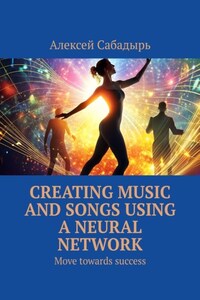Chapter 1: A New Dimension in Musical Creativity: Neural Networks and the Future of Music
Introduction to Artificial Intelligence and its Applications in Music
For centuries, music has been a cornerstone of human expression, evoking emotions, telling stories, and uniting people across cultures. But in recent years, a new force has entered the creative process – artificial intelligence (AI). Specifically, neural networks, a type of AI that mimics the structure and function of the human brain, are revolutionizing the way music is created, performed, and experienced.
While the idea of AI composing music might seem like something out of a science fiction novel, it’s becoming increasingly commonplace. Neural networks are now being used to create everything from catchy pop tunes to complex orchestral compositions, demonstrating their versatility and potential to shape the future of music.
How Neural Networks Learn to Create Music
Neural networks are trained on vast datasets of music, learning patterns, melodies, harmonies, and styles from a wide range of genres. They analyze the relationships between notes, chords, and rhythms, discovering underlying rules and principles that govern musical composition. Once trained, these networks can generate new musical ideas, synthesize sounds, and even compose entire pieces of music.
Existing Tools and Software
A growing number of AI-powered music creation tools are available, ranging from user-friendly apps to sophisticated software platforms. Some popular examples include:
– Jukebox: A powerful AI system that can generate music in various genres, from rock and pop to classical and jazz.
– Amper Music: A platform that offers AI-powered music composition tools for various purposes, including film scoring, video game music, and advertising jingles.
– AIVA: An AI composer that can create original music in various styles, from classical to contemporary.
– Soundraw: A tool that allows you to create sound effects and background music for videos and other media.
Advantages and Limitations of Using Neural Networks in Music
The use of neural networks in music offers numerous advantages, including:
– Enhanced Creativity: AI can help musicians break free from creative blocks and explore new sonic possibilities.
– Time Savings: AI can automate many aspects of music creation, saving time and effort.
– Accessibility: AI tools make music creation more accessible to people without extensive musical training.
– Unique Sounds: AI can generate unique and innovative sounds that might not be possible with traditional methods.
However, it’s important to be aware of the limitations of AI music generation:
– Lack of Emotion: While AI can create technically proficient music, it may lack the emotional depth and nuance that humans bring to music.
– Over-reliance on Data: The quality of AI-generated music is heavily dependent on the data it’s trained on.
– Ethical Considerations: There are concerns about the potential impact of AI on the music industry and the role of human musicians.
Despite these limitations, the use of neural networks in music is rapidly evolving. As AI technology continues to improve, it’s likely to play an increasingly important role in shaping the future of music creation and listening experiences.
Chapter 2: Understanding Neural Networks for Music Creation
The power of AI in music creation lies in the heart of neural networks, complex algorithms inspired by the human brain. To truly harness this power, understanding the types of neural networks used in music, their training process, and how to effectively interact with them is crucial.
Types of Neural Networks Used in Music
Several types of neural networks are commonly employed in music generation:
– Recurrent Neural Networks (RNNs): These networks excel at processing sequential data, making them perfect for analyzing and generating music, which unfolds over time. They have a «memory» that allows them to learn from past patterns in a sequence, predicting what comes next.
– Generative Adversarial Networks (GANs): GANs consist of two competing neural networks: a generator that creates new music and a discriminator that evaluates its quality. This constant back-and-forth between the generator and discriminator leads to increasingly realistic and diverse musical outputs.
– Convolutional Neural Networks (CNNs): CNNs excel at analyzing and understanding patterns in images and audio. They can be used to extract features from musical audio, such as the timbre of instruments or the rhythmic structure, which can then be used for generating new music.
Training Neural Networks: Data, Algorithms, and Parameters
Training a neural network for music creation involves the following key steps:
– Data Acquisition: A large dataset of musical examples is needed to teach the network the patterns and structures of music. This can include pre-recorded music, musical scores, and even textual descriptions of music.














